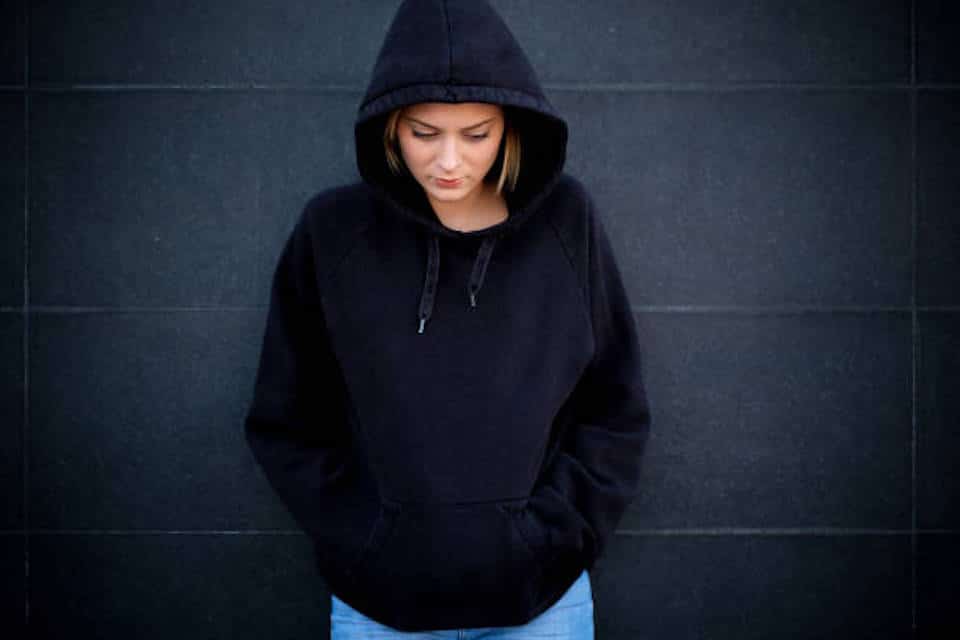When it comes to personal safety and threats, how do we know what to look for? What can we learn by observing others, and how hard is it to train our eyes to see potential harm?
“My experience of growing up with a violent father taught me the significance of being vigilant. It also motivated me to have a desire to see bullies face the consequences of their actions. After serving with the Royal Marine Commandos, I spent years teaching combatives such as Muay Thai kickboxing, tactical firearms, and edged weapons. Nevertheless, we are all aware that the most effective approach to winning any fight is to prevent it from happening in the first place. Our body language is a key indicator of our personality, attitude, and even our intentions. Recognizing what to observe can be crucial in identifying malicious individuals early enough to evade them and keep ourselves safe.”
According to Terry Vaughan, honored speaker for the Armed Women of America’s 2023 National Conference & Leadership Summit, “Improving our vision is a two-step process that involves understanding our visual and cognitive limitations and applying specific techniques to compensate for them. During my sessions, I always cover strategies to enhance visual acuity.”
One useful technique is to scan our surroundings twice. During the first sweep, we should let our eyes roam freely, and during the second scan, we should look beyond the initial points of interest, also known as fixations. This two-scan approach enables us to take a more detailed look at our surroundings and the people in it. It also gives the impression that we are aware of our surroundings, making us a less vulnerable target than others.

In terms of what we should be looking for, here are a few quick and easy nonverbal signals everyone can start identifying:
Hands & Hoodies!
If someone intends you harm, they will likely use a force multiplier, and unless they have a knife between their teeth like a bloody pirate, their hands will be holding the tool. Identify what they are holding ASAP. If you can’t see their hands treat the missing appendages with suspicion. Hoodies are the universal way to fight the chill and to pass unnoticed through an environment by obscuring the face and head.
Are they attentive?
You can also look for people besides yourself who are attentive to their surroundings. Attention to the environment is above baseline or the expected, as most of the population is oblivious to what is happening around them. Look for attentive people, and you’ll either find someone situationally aware or hunting for targets of opportunity.
Are they attentive to you or someone in your group?
We are drawn (visually/physically) to things we like and repulsed by things we don’t. If someone is observing you, then it’s likely that their vision is drawn to you for a reason. With your safety the priority, assume they aren’t looking to invite you out for a latte and err on the side of caution by readying your shoe-fu (moving away & creating space) and/or getting your hand on your self-defense tool so you can draw it in 1-second or less.
Dee, a Yuba/Sutter, California, AWA Chapter Leader, was inspired by Terry Vaughan’s body language class. “I attended his session in Ohio, and seeing him in Sacramento again really gave me some insight into reading people. I realized that to be aware at that level though, we must practice.” Wanting to put the skills to work, she “set up an additional chapter meeting on a Friday at the mall to be observers. We first discussed many of the observation techniques that we learned and I made sure to let the mall security (and Sheriff’s Department) know what we were doing.”
“We set out to spot those carrying a firearm. We spotted only three but we also realized that men are completely vulnerable to being pick-pocketed. Wallets were hanging out of their back pockets. We were stunned at how many there were. We stalked a couple that had their hands synced into their pockets until we determined why. They seemed to be meandering and one hand in their shorts or pants. We eventually realized they were both vaping (WHEW).”
“What was most alarming was that we didn’t spot anyone that had a swivel head. Everyone was in their own world and could easily become victims. We even went so far as putting on a huge shirt with a hoodie, holding a walking stick under it close to our body, puffing out our chest, exposing our neck and chin, slinging the free arm, and walking faster that the rhythm of the crowd. That got everyone to look at us and observe what we were doing; even the shoppers inside the stores were watching us in the hallway. But when the hoodie was still around the face, making our bodies small, hiding our neck and face, cutting off families, wandering way too close to anyone while still keeping pace with the attendees, we were never noticed.”
“Terry’s observational skills expanded our understanding of human behavior, but I believe that if we don’t practice people watching just like we practice our dry fire, we won’t get any better. I feel much safer for it in the general public. We can’t wait to see him at the conference and learn more, I’ve signed up for his course and am in the process of taking it as well.”
“Learning these skills doesn’t have to be stressful though.” Terry says, “Acquiring the information for personal security should be empowering, entertaining, and manageable, even for those that have never thought about learning to keep themselves out of harm’s way.” Terry Vaughan has brought an incredible wealth of knowledge to many AWA women over the last few years with his D.I.R.T. Dangerous Individual Recognition Training® workshops. This year, he brings additional techniques to practice and apply with Staying Calm in a Crisis and Mastering Body Language for Leaders: Emotional Intelligence. In Terry’s experience, “One of the best ways to appeal to all is to make the workshops and sessions fun and informative–or, as he likes to say, edutaining!”
Whatever your reason for wanting to become more alert (a mother, victim, works with a lot of public, etc.), we hope you will join us for these inspirational and “edutaining” courses where you can immediately take away skills for practicing personal safety. It sounds like there are a lot of surprises when you take the time to watch the people around you!

Terry is a TEDx speaker, body language and personal safety expert, author, and former British Royal Marines Commando. He is the creator of several body language workshops, including D.I.R.T. Dangerous Individual Recognition Training®, Mastering Body Language for Leaders, and Mastering Body Language for Emotional Intelligence.
Vaughan is also a past competitor on season 4 of the History Channel’s TOP SHOT, a former television host for the BBC and GUNTV, and the author of the popular book, NOT WITH MY DAUGHTER! A Dad’s Guide to Screening Dates and Boyfriends.
For interest in finding an Armed Women of America chapter, visit armedwomen.org and for more details on this year’s National Conference & Leadership Summit, visit awaconference.org.
The Women's Outdoor News, aka The WON, features news, reviews and stories about women who are shooting, hunting, fishing and actively engaging in outdoor adventure. This publication is for women, by women. View all posts by The WON